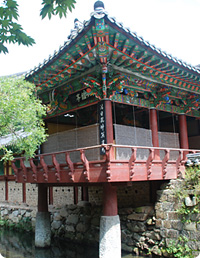PACKAGE
Hop-on Hop-off 9 days
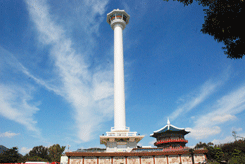
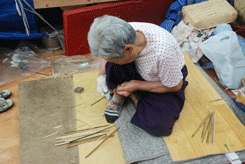
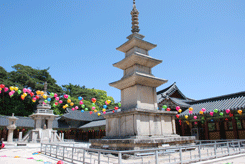
Tour Highlights
- SIC Seoul city tour
- SIC Gyeongju tour
- SIC Jeju tour
Click on the days to access the programs quick
| Days | Visits and Activities | Distance |
| Day 1 | Arrive Seoul | 60km |
| Day 2 | Seoul | |
| Day 3 | Seoul - Gyeongju | 390km |
| Day 4 | Gyeongju - Busan | 110km |
| Day 5 | Busan | |
| Day 6 | Busan - Jeju | 320km |
| Day 7 | Jeju | 110km |
| Day 8 | Jeju - Seoul | 590km |
| Day 9 | Departure | 60km |
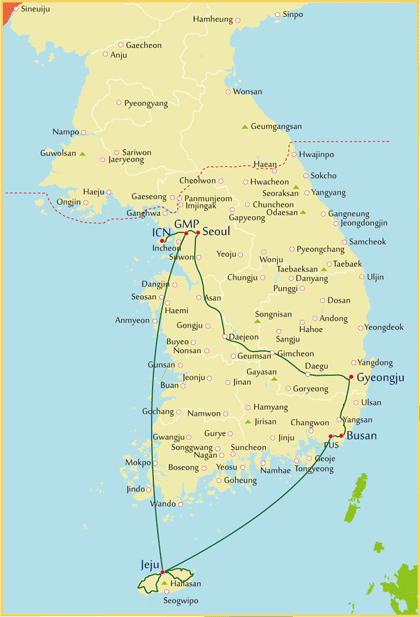 The SIC or Seat in Coach tour operates by only English-Korean speaking guide.
The SIC or Seat in Coach tour operates by only English-Korean speaking guide.
Those who wish to participate SIC tour will share vehicle and guide service with other tourists. You are requested to show up in time at the tour departure point for we do not arrange pick up service from one hotel to another. The tour covers the attractions as what listed in the itinerary then at the end of the tour you are dropped at the designated point from where you make your own transfer to your hotel. The tour is designed for independent visitors with more emphasis on flexibility in cost and program. The visits may alter without prior notice.
Day 1 Arrive Seoul (- - -) 60km
At own transportation to your hotel.
Day 2 Seoul (B)
Your exploration this morning begins as you join the tour with other tourists at the designated meeting point. As you drive, take in the sight of Seoul Plaza, City Hall, Cheonggye Square and pedestrian-friendly Gwanghwamun Plaza that is hemmed in on three sides by rushing traffic. The plaza is lined on each side with 365m long streamlets, two centimeters deep and one meter across, the stone bed of the plaza's east side waterway engraved with important events in chronological order from 1392 to 2008.
Standing high on a stone pillar is a statue of Yi Sunsin who had engaged in twenty-three naval battles and emerged victorious in all of them during the Hideyoshi invasion (1592-1598). King Sejong who propagated the Korean alphabet in the 15th century is also honored with prominent statue. On August 16, 2014, Pope Francis celebrated Mass in this plaza to beatify 124 Korean martyrs. Near the southwest corner of the plaza is Korea's Kilometer Zero, marking the distances to 64 cities around the world, including Seoul's antipode, Montevideo, Uruguay, 19,606km.
Step back in time to when life was gracefully slow and discover Gyeongbokgung Palace, a particularly charming spot that represents a colorful and turbulent side of the capital's 500-year history. Depending on timing, you may witness the Royal Guard Changing Ceremony featuring parade, password verification, duty shift and patrolling the gate. Accompanied by a court band with its colorful costumes and royal flags, the ceremony is performed daily basis at 10:00 and 14:00 except Tuesdays, although it is cancelled in case of rain or extremely hot or cold weather.
Up from the gates is a spacious stone-paved courtyard that is fully enclosed by wooden cloisters, and at the center of which runs three footpaths through two rows of rank stones, indicating the positions of the officials with the highest rank being closer to the hall.
Standing majestically on top of a two-tiered stone platform that is lined with detailed balustrades is Geunjeongjeon Hall, where the king formally granted audiences to his officials, gave declarations of national importance, presided over large official functions, and greeted foreign envoys and ambassadors. Check out the royal throne and a large painting, depicting sun, moon, five peaks, streams and pine trees, which was the crucial signifier of the king. And up in the center of the ceiling, the bright golden dragons in bold relief indicate the presence of the king.
At the back of the throne hall is a group of court offices. Displayed in front of the King's official quarters is sundial, conceived in order to catch the shadow of the sun, which tells time and 24 periods of seasonal change from the winter solstice to the summer solstice.
Sitting on the island in the rectangular lake is Gyeonghoeru. Supported by 48 square and cylindrical massive stone pillars representing the idea of Yin and Yang, this magnificent pavilion was used for many purposes ranging from receptions to national examinations.
Gangnyeongjeon is the king's sleeping and living quarters while Gyotaejeon is the queen's domain containing a number of halls. The noted feature of these main buildings is an absence of a top roof ridge.
Amisan Garden, landscaped with four hexagonal chimneys in orange bricks, is seldom noticed by the hurried visitors. Jagyeongjeon is the queen dowager's residence. Although less colorful, it is worth noting the wall, adorned with floral designs and the chimneys with ten longevity symbols.
Hyangwonjeong features a small pond with a manmade islet that supports a beautiful two-story pavilion. Behind this serene garden is Geoncheonggung, where the king and queen could relax in peace and quiet. It was here that the first electric lights in the country were installed in 1887 after 8 years of Thomas Edison's invention and a tragic chapter in Korea's history was recorded when empress Myeongseong was assassinated by the sword-bearing Japanese assassins in the early morning of 8 October 1895, allegedly under orders from Miura Goro.
Upon exiting the Sinmumun gate, you will take a few minutes to take some pictures in front of the Blue House, the executive office and official residence of the president of Korea.
Then back into the palace and learn about the cultural wealth of this friendly and picturesque nation at the National Folk Museum of Korea. You visit to the museum will familiarize you with wealthy culture of this friendly and picturesque nation. It is an excellent facility providing insight into the daily
life and work, costumes and ornaments, handicrafts and technology, educations, living quarters, dietary life, oriental medicine, performing arts and games, beliefs and rituals, and socio cultural life of the Korean people from the prehistoric age to the Joseon dynasty.
With time to stop off at Amethyst Showroom for souvenirs, You will tour the centuries-old Namdaemun Market brimming with well over 11,000 shops selling anything you can imagine. One of the most colorful aspects of the market is an endless sprawl of street-vendor stalls that setup in the alleys and walkways between the buildings. The market is seriously crowded, so be prepared to get bumped around. A fantastic place to haggle over the price to get the best deal on something you want or simply admire the vibrancy of this massive market.
At the western entrance of the market in the middle of a traffic circle stands Sungnyemun. It is a formidable and iconic construct that served as the southern gate of the wall that surrounded Seoul during the period of the Joseon Dynasty.
The tour ends at Myeongdong, allowing you to explore it at own. Or you will continue your ride to Lotte hotel Seoul. Myeongdong has been the center of fashion. Boutiques, cafes and swanky shops that sell clothes and accessories lined on both sides of the narrow alleys of Myeongdong. The alleyways come alive with shoppers walking past the fancy displays of shoes and handbags, tailor-made suits and shirts, latest design dresses, handcrafted modern jewelry, stockings and cosmetics. Of the most notable attraction here is the Gothic style Myeongdong cathedral. It was built in 1898 and serves as the administrative seat of the Catholic church in Korea. At the end of the tour you will be dropped at the Lotte Hotel Seoul.
In the event of Gyeongbok palace being unavailable for any reason or closed (Tuesdays), the visit will be substituted with Deoksugung Palace.
Deoksugung palace
With the destruction of Gyeongbok palace by Hideyoshi's invasion in the late 16th century, it had been the detached palace and not used by kings for 270 years with exception of several years by King Injo. In 1897 when King Gojong ended his one year stay in the nearby Russian legation, he refused to return to Gyeongbok palace, and settled here. Attractions are Daehanmun, the main gate of the palace which was moved back from its original location in 1971. Junghwamun gate, in accordance with palace architecture, there is a stone bridge to cross after entering the palace grounds. There are three series of steps in front of the three doorways to this gate; The king used only the middle entrance. The royal dragon insignia is in the center flanked by four Haetae (fire eating monsters) on the step railings. The audience hall, originally a double-roofed building, was reconstructed with only one floor after fire of 1904. The throne chair is seen in the center. The dragon theme, symbol of royalty, is prevalent throughout the design of the throne chair. The huge incense burners located on the corners of the platform were lit during a royal audience. Seokjojeon is the art gallery designed by an English architect in 1901 and completed in 1909. Chunmyeongjeon, the King Gojong's residence, Jukjodang, the King Injo's residence, Seogeodang, the King Sunjo's residence, inner palace residences, a bell cast in 1306 to honor Queen of the first king of Joseon dynasty (1392-1910) and a statue of King Sejong who invented the Korean Alphabet Hangul in 1443.
Day 3 Seoul - Gyeongju (B) 390km
Enjoy a pleasant two hours journey on a speed train through the picturesque countryside of Korea to Gyeongju, an ancient capital of the Silla (BC57-AD935), often dubbed as Museum without Walls. As leisurely make your way to Gyeongju, you will see Korea's fertile farmland, glistening brooks, heavily sheltered ginseng farms, apple plantations and lovely rice paddies that together forming a patchwork of colors and ever-changing textures of the rural Korean life.
Today, you are treated to one of the ten most historically significant sites in the world with ancient temples, weathered stone pagodas, royal tombs, Buddhist bas-reliefs, and fortress ruins.
You will have plenty of opportunity to explore the city at your own pace. In your free time, we highly recommend UNESCO World Heritage site of Yangdongmaeul, a delightful journey to the traditional clan village which embraces simple, unadorned natural beauty. There are some steep hills to climb but also easier streets. Over 150 homes as well as two shrines are in perfect harmony with the natural topography, presenting different angles where walls ascend a hill interspersed with tiled roof houses or thatched roof buildings.
Day 4 Gyeongju - Busan (B) 110km
Meet your tour guide upon pick up at your hotel and begin your exploration as you visit Tomb of King Muyeol (603-661). Presided over the golden age of Silla expansion, King Muyeol forged an alliance with Tang China and defeated the rival Baekje kingdom with the help of Kim Yusin. Behind the king's tomb are four giant mounds that are believed to hold the remains of relatives of the king. A famous turtle base with tablet cap-stone that dates from the original construction can be seen near the tomb.
Then view the world's oldest existing astronomical observatory, Cheomseongdae. Each stone used in the observatory bears symbolic meaning; the same number of the days of the year by lunar calendar, the number of the major stars, the months of the year and the numbers of the seasonal divisions. Nearby Tumuli Park encompasses 23 huge tomb mounds where Silla rulers were buried. One of the tombs, Cheonmachong, is opened to the public and you can go inside and see how the tombs were made and replicas of the treasures excavated in 1973.
With time to explore Donggung palace and Wolji pond, a pleasure garden built to commemorate the victory of Silla, and later used as the recreational area for the Silla's royal family, tour heads towards
UNESCO World Heritage Sites, Seokguram grotto. It is the home of the serene stone Buddha of the eighth century. Inside, a white statue of a seated Buddha in a sublime state of enlightenment, is surrounded by 37 relief figures of Bodhisattvas, disciples, devas, and guardian kings. The grotto represents the magnificent harmony of religion, science and the arts of Buddhism, symbolizing the pure land in which Buddha resides.
A short ride leads you to another UNESCO World Heritage Site, Bulguksa temple, where you will witness the impressive gates, symbolic bridges leading up to the world of Buddha, graceful architectures, Three-storied Seokgatap and highly ornate Dabotap blending well into the architectural harmony.
At Gwaneumjeon hall, check out the image of the Avalokitesvara who is referred to as the Bodhisattva of Compassion and has a thousand hands, and eyes in each so as to reach out to those in need of help. You will see a gilded statue of Vairocana with the gesture of the first wisdom, Sakyamuni Buddha attended by two bodhisattvas along with sixteen figures of Buddha's disciples sitting in deep meditation, and a gilt-bronze Amitabha Buddha, the ruler of the Western Paradise Sukhavati. The architectural design of Bulguksa is one of constrained dignity, peace, and harmony and the temple still remains one of the most remarkable achievements of the ancient Far East.
After the tour, you are dropped off at Gyeongju terminal or Singyeongju station from where you can catch the bus or train for Busan. Surrounded by the ocean on one side, and mountains on the other, its deep harbor and gentle tides have allowed Busan to grow into the largest port in Korea and the fifth largest in the world. It is also a center of industry and commerce, a thriving metropolis formed unusually long in shape along its coastal line.
Day 5 Busan (B)
There's plenty to keep you entertained but the best introduction is to jump on a hop-on-hop-off bus tour that operate daily except Mondays. Both depart Busan station at 09:20 with 20 minutes interval, having the last departure at 16:40.
One such tour is Haeundae route. The tour bus stops at UN Memorial Cemetery, Busan museum, Gwanganri beach, Nurimaru, Aquarium, Haeundae beach, BEXCO, Gwangan bridge, UN memorial cemetery and finally Busan station, taking roughly 1 hour 40 minutes on driving tour.
UN Memorial Cemetery is where 2,300 deceased soldiers from sixteen Korean War allies rest in honored serenity. During the period of 1951-1954, remains of approximately 11,000 fallen of the UN Forces were buried here. Thereafter, most were repatriated to their home countries. It is the permanent home war heroes of the following nations. Australia (281), Canada (378), France (44), Netherlands (117), New Zealand (34), Norway (1), South Africa (11), Republic of Korea (36), Turkey (462), United Kingdom (885), USA (36), Unknown soldiers (4), Non-belligerents (11).
Busan aquarium is a great attraction. There are approximately 250 species and up to 35,000 marine animals on display. The main tank contains 3 million liters of water and the animals can be viewed through huge acrylic windows or from the 80-meter long underwater tunnel. There are 40 separate exhibits which include penguins, otters, piranha, sea jellies and a touch tank for a close up "hands on" look at a variety of sea creatures.
Haeundae Beach is a world-class beach resort blessed by beautiful water. The soft sand stretches 1.5km along the beautifully curved coastline, which culminates in the summer. Located on Dongbaek isle at the southern edge of Haeundae beach, Nurimaru is the house where world leaders gathered and held the APEC Leaders' Meeting in November of 2005. There is an eye catching symbol of longevity at the entrance of 3rd floor. This masterpiece of lacquer work inlaid with mother-of-pearl shows 12 symbols of longevity; the sun, cloud, mountain, rock, water, crane, deer, turtle, pine tree, herb of eternal youth, bamboo, and mythical peach. The isle is a great venue for walking tour. On a clear day, a Japanese island of Tsushima, located about 65km away, comes into your sight.
Day 6 Busan - Jeju (B) 320km
Spend another day in Busan for further exploration.
In your free time, we highly recommend Taejongdae route that stops you at Yongdusan park, Domestic ferry terminal, 75 Park, Taejongdae, International ferry terminal, Namhang bridge, Songdo beach, Jagalchi fish market and finally Busan station, which takes also 1 hour 40 minutes on driving tour.
You will tour Yongdusan Park where Busan Tower sits atop a hillock of a steep slope, affording 360-degree views of the hilly terrain of this mountainous coastal city and the harbor. Smack dab in the middle of the park stands the statue of Yi Sunsin, who is credited with the perfection of the first iron-clad warship in history. You will also see a flower clock and a Busan citizen's bell that they ring on New Years' Day, March 1 and August 15.
Just off the park is Gwangbokro Street, full of shops selling everything from bargains to luxury items. Adjacent is a maze of small streets alive with color, sidewalks sprinkled with unique shops and local eateries. Enjoy the vibrant ambience as you leisurely make your way to the BIFF square, Busan’s modern movie district having hand prints of the famous movie stars and directors on the sidewalk, movie theaters, trendy shops and street food stalls. The area with originally little more than a pair of cinemas that were built over half a century ago had turned into the newly transformed district, and was named BIFF Square on August 14, 1996.
Across the street from the plaza is Jagalchi fish market, a great attraction located dockside. Here you will find a diverse array of seafood on display as you walk along the narrow alleys of street vendors. A nearby indoor market features live fish in the tanks and the upstairs are dried fish along with many restaurants selling raw fish at reasonable prices. The market is really a visual and culinary treat.
Taejongdae is a park located far off the southernmost coast of Yeongdo with heavily forested and rugged cliffs dropping strait down to the sea. You will have a colorful tram to the main attraction - Observatory Deck where you will get a stunning view of a lush forest, surging waves crashing into rocks and islets floating on the ocean. There is a mother and children statue by the Observatory Deck, a few steps away from suicide rock. You will recall something about its comfortable image. On a clear day, you will also view Japanese island, Tsushima.
An hour flight places you in the most famous of the 3,300 islands of Korea. Towering over the island is Korea's highest peak, Mt. Halla, an extinct volcano topped by a huge crater. Jejudo was once a place of exile for those who fell out of favor with the Korean court, but it has today become the most popular tourist destination.
Day 7 Jeju (B L) 110km
Meet your guide upon pick up in your hotel and spend a full day exploring fascinating culture and natural wonders of Jeju. Your exploration today will begin with a ponyback riding. You will be given a short course on riding. The trail rides provide excitement as well as fun. In case of rain, the Horse Museum will be visited instead.
Experience the heritage of the Jeju people and soak up the local culture in Seongeup folk village where nearly 400 traditional thatched houses are still fully functioning. Scattered among the village are many houses that you can enter yourself and look around. Jeongnang gates are some of good examples that represent a beautiful tradition and culture of this friendly people with No Thief, No Beggar, and No Gate. While not overly exciting, the tour gives you a chance to get a glimpse into some of Jeju's unique culture.
You are treated to the UNESCO World Natural Heritage site of Seongsan Ilchulbong. Known as Sunrise Peak, it is the island's largest tuff cone which is surrounded on three sides by the ocean rising 182 meters straight from the water. You may wish to climb this steep cone up to the spectacular crater. A great for photos every step of the way!
Haenyeo Performances are twice a day at 13:30 and 15:00 down at the water’s edge. Haenyeo are the Jeju women divers who harvest seafood by diving into the ocean without diving equipment or breathing apparatus. You will witness the strong tenacity of these Jeju women who are testament of the role reversal which was passed on from generations since then. They start off their dive with a ritual where they sing and perform a synchronized display with their diving gear. Following the ritual, they peddle their way to the open sea with white-coloured floats and nets to store their catch and dive down for their catch of the day. Unlike other divers, what makes these Jeju women divers special and more remarkable is that they do not use any form of breathing equipment, and rely wholly on their own strength.
After which, the freshly caught seafood is cut apart right before your eyes and you can even taste it if you are up for some really fresh seafood! Definitely an interesting sight and a great way to learn the culture of the famed women divers who display great strength that belies their age. The performance is cancelled in case of rain, strong wind, rough tide or extremely cold weather, there is a substitue tour of Haenyeo Museum.
Haenyeo Museum showcases the women diver's harsh work and life. Typically, they dive from September to May, and rest of the month work on their farms all while taking care of their children and domestic duties. The display includes the tools, diving outfits, as well as diving techniques, various implements used to collect seafood and a full-size replica of a traditional women diver house including a primitive log raft that once used for fishing.
Later, you will tour another UNESCO World Natural Heritage site, Manjang Cave. It is the world's longest lava tube which has a known length of 13.4km. Be prepared for the damp and the difference in temperature. On entering the cave, you are likely to be greeted by a cold breeze oozing out of the lava tubes, and the cave's ceiling tends to drip at times. Although the floor is full of puddles and the lighting inside is dim, you can easily cover up to 1km by walk, exploring the weirdly shaped stalactites, stalagmites, flow ledges and finally lava stone pillar. One of the major attractions inside the cave is the Stone Turtle, which many believe is shaped like Jejudo.
Day 8 Jeju - Seoul (B L) 590km
Enjoy a full day exploring fascinating culture and natural wonders of Jeju. Enjoy a short stop at Hyeopjae beach. This beach is perhaps among the most beautiful. It is covered with fine and soft glistening white sands, offset by deep blue colored outcroppings which jut out into the turquoise water.
Hallim Park is a subtropical botanical garden that is strongly scented with exotic sentiment. Every turn brings new surprises. Here, you will explore two unusual caves, one has both stalactites and stalagmites in it while the other is the only spot in the world that is actually a cave within a cave.
Weather works out, enjoy a pleasant Hiking at Suwolbong, a 77-meter high tuff ring of pyroclastic deposits, giving off a feel of tranquility and peacefulness. You would be immediately awed by the unspoiled nature and breath-taking view of the surrounding areas, which include numerous smaller islands and sediments. You will find a greater historical significance, as well as an educational purpose for geologists. Suwolbong also holds a sad legend of Nokgo and Suwol. The walk is cancelled in case of bad weather, then
tour substitues with O"sulloc Tea Museum.
Surrounded by rows of neat tea plantations, this environment-friendly tea gallery displays tea cups, tea pots and the history of O'sulloc's superior green tea. Together with a souvenir shop and a cafe, it makes for a quaint place to sit and enjoy some green tea and a variety of tea rolled cakes, green tea lattes, cookies, or ice cream if not overly crowded. It is not much of a museum but a sort of sales outlet for green tea products.
Sanbangsan is a magnificent trachyte cone abruptly rising 395 meters by the sea that lacks crater on its summit. Access to the grotto is steep stairs up for 10 minutes. There is a tiny cubbyhole of the 10 meter cave with a small pool and a stone Buddha surrounded by burning candles. The grotto's aura is enchanting with the welcoming scent of incense hanging heavily and the sound of water steadily dripping into the pool. The views from the grotto over the coastal fields, offshore islands, and the ocean are absolutely stunning. .
Later, you will tour Cheonjeyeon Falls cascading in three different stages into a deep Cheonjeyeon pools. Up from the fall is a large arch bridge, having 7 fairies carved on the side, allowing visitors a spectacular view of the falls. During the winter months, this waterfall may be nothing more than a mere trickle, but the nature itself is still beautiful.
After the tour return on a flight to Seoul.
Day 9 Departure (B) 60km
After this wonderful trip exploring Korea and with time to reflect on your surprise in your experience, you will return to the airport in time for your flight. By boarding, you are already high above Incheon heading for home.





